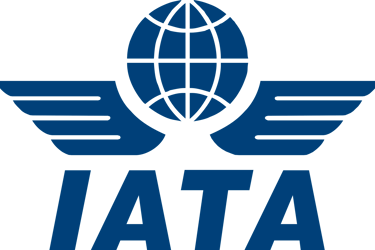How Air Travel is Changing in the Post-Pandemic World
How Air Travel is Changing in the Post-Pandemic World
3/11/20255 min read


How Air Travel is Changing in the Post-Pandemic World
The COVID-19 pandemic transformed nearly every aspect of life, and air travel was no exception. What was once a routine experience—boarding a flight, sitting in a cramped seat, and experiencing long security lines—has been upended, with new health protocols, changing regulations, and altered traveler behaviors. As the world continues to recover and adapt, air travel is evolving in ways that could shape the future of the industry for years to come.
In this article, we’ll explore how air travel is changing in the post-pandemic world, from innovations in safety and technology to shifts in consumer preferences and airline operations.
1. Health and Safety Protocols Are Here to Stay
In the early days of the pandemic, airlines and airports rushed to implement health and safety protocols to protect passengers and staff. Today, many of these measures have become permanent or semi-permanent features of the air travel experience.
Enhanced Cleaning: Airlines and airports have ramped up cleaning procedures, with a particular focus on high-touch areas like tray tables, armrests, and bathrooms. Many airlines are also using electrostatic sprayers and antimicrobial cleaning agents to ensure a higher level of hygiene.
Contactless Technology: To reduce physical interaction, more airlines and airports have embraced contactless technology. This includes mobile check-ins, digital boarding passes, facial recognition for identity verification, and touchless kiosks at airports. Passengers can now move through the airport with fewer physical touchpoints, enhancing both convenience and safety.
Air Filtration Systems: Cabin air quality has taken on greater importance. Many modern aircraft are equipped with advanced HEPA (high-efficiency particulate air) filters, which capture nearly 100% of airborne particles, including viruses. This helps improve air quality and reduce the spread of airborne diseases.
Masks and Social Distancing: While mask mandates may have eased in some regions, many airlines still recommend or require masks during flight. Social distancing measures are also more common at airports, with floor markers to encourage physical distancing in queues, waiting areas, and boarding gates.
2. Shift Toward Domestic and Regional Travel
The pandemic severely restricted international travel due to border closures, quarantine requirements, and health concerns. While many international routes are now gradually reopening, a noticeable shift has occurred toward domestic and regional travel. Several factors contribute to this trend:
Travel Restrictions: Even as global travel resumes, international borders remain subject to fluctuations in regulations, testing requirements, and quarantine rules. As a result, travelers are opting for more flexible and predictable domestic and regional flights to avoid the complexities of international travel.
Work-from-Home Flexibility: With remote work becoming more prevalent, many travelers are seeking short-term domestic getaways or “workations” to nearby destinations. This trend has also led to an increase in the demand for regional flights, with travelers preferring to explore local and neighboring countries over long-haul international trips.
Increased Focus on Local Tourism: The pandemic forced many people to rediscover their local regions, whether for business, leisure, or staycations. As borders remain closed or tightly controlled in some areas, travelers are more likely to choose destinations within driving distance or a short flight away.
3. Digital Transformation and Automation
The pandemic accelerated the digital transformation of the airline industry. From booking to boarding, technology is changing the way we interact with airlines and airports. Innovations that started as temporary solutions during the pandemic are now becoming permanent fixtures of the air travel experience.
Biometric and Facial Recognition Technology: More airports are implementing biometric systems that allow passengers to use facial recognition to check in, drop off luggage, pass through security, and board the plane. This technology is designed to streamline the passenger experience, reduce waiting times, and enhance security.
Smart Airports: Many airports are embracing digitalization to create more efficient, seamless travel experiences. With innovations like AI-powered baggage handling, automated security checks, and virtual assistants, airports are adopting cutting-edge technologies to improve the overall passenger journey.
Mobile-First Travel: The pandemic highlighted the need for contactless, mobile-friendly options. Passengers can now book flights, check in, track their baggage, and even order food and drinks using apps and mobile devices, reducing the need for in-person interaction. This trend is likely to continue as travelers seek convenience and safety.
4. Flexibility in Travel and Booking Policies
Before the pandemic, travelers often faced rigid flight policies, including strict cancellation fees and change penalties. However, the uncertainty of the pandemic forced airlines to reconsider these policies, leading to increased flexibility that continues today.
Flexible Booking and Refund Policies: Many airlines have adjusted their booking policies to allow easier changes or cancellations without hefty fees. Passengers can often change their flight dates or routes without facing exorbitant fees, allowing them more flexibility in their travel plans.
Travel Insurance and Protection: With health and safety top of mind, travelers are increasingly seeking peace of mind through travel insurance that covers trip cancellations, medical emergencies, and quarantine costs. Airlines and booking platforms are also bundling these options into their offerings.
Post-Pandemic Loyalty Programs: Airlines are rethinking their loyalty programs, with many offering more flexible points redemption and extensions on status levels. This flexibility helps travelers feel more confident in booking flights, knowing they can make adjustments if necessary.
5. Rise of Sustainability and Green Aviation
The pandemic has brought sustainability to the forefront of the travel industry. With fewer flights operating during the pandemic, carbon emissions from the aviation industry temporarily dropped, highlighting the environmental impact of air travel. As a result, airlines and airports are under increasing pressure to adopt more sustainable practices.
Carbon Offsetting: Many airlines now offer passengers the option to offset their carbon footprint by investing in environmental projects, such as reforestation or renewable energy initiatives. Some airlines have even committed to reaching net-zero carbon emissions within the next few decades.
Sustainable Aviation Fuel (SAF): SAF is emerging as a critical solution to reduce carbon emissions from flights. SAF is produced from renewable sources like plant oils and waste products, and it is more eco-friendly than traditional jet fuel. Many airlines are partnering with fuel providers to increase the use of SAF in their fleets.
Energy-Efficient Aircraft: Airlines are investing in more energy-efficient aircraft, which consume less fuel and generate fewer emissions. Newer models, like the Boeing 787 and the Airbus A350, are designed to be lighter, more fuel-efficient, and quieter than older aircraft.
6. Changing Passenger Expectations
The pandemic has also shifted how passengers approach air travel. Expectations around cleanliness, safety, and convenience have increased, with many travelers expecting airlines and airports to go above and beyond to meet their needs.
Health and Hygiene Focus: Beyond masks and social distancing, travelers now expect higher standards of cleanliness. Airports and airlines are investing in air purifiers, antimicrobial surfaces, and transparent sanitization procedures to reassure passengers that they are traveling in a safe environment.
Contactless Services: As part of a broader trend toward contactless interactions, passengers now expect smoother, touch-free services at every step of the journey, from booking and check-in to boarding and baggage claim.
Personalized Travel: With data analytics and AI, airlines are personalizing the passenger experience more than ever before. This includes tailored flight recommendations, personalized customer service, and options to customize in-flight services, such as meal preferences and entertainment.
Conclusion
The pandemic has been a catalyst for significant change in the airline industry, accelerating trends toward digitalization, flexibility, sustainability, and heightened health and safety. While some of the changes may have been born out of necessity, they are proving to be positive steps toward a safer, more efficient, and customer-centric travel experience. As we move into the post-pandemic world, air travel is likely to continue evolving, with new innovations and practices that cater to the changing needs of travelers in a fast-changing world. Whether you’re flying for business or leisure, expect the air travel experience to be more streamlined, more sustainable, and more adaptable than ever b
Explore
Your journey begins with Luxuria Elite Travel Agency.
© 2024. All rights reserved. Luxuria Elite is affiliated with Nexion Canada ULC. 380 Wellington St Tower B, 6th Floor, London, Ontario N6A 5B5 HQ PHONE 519-660-6966 TICO REGISTRATION # 1549342




Contact us
